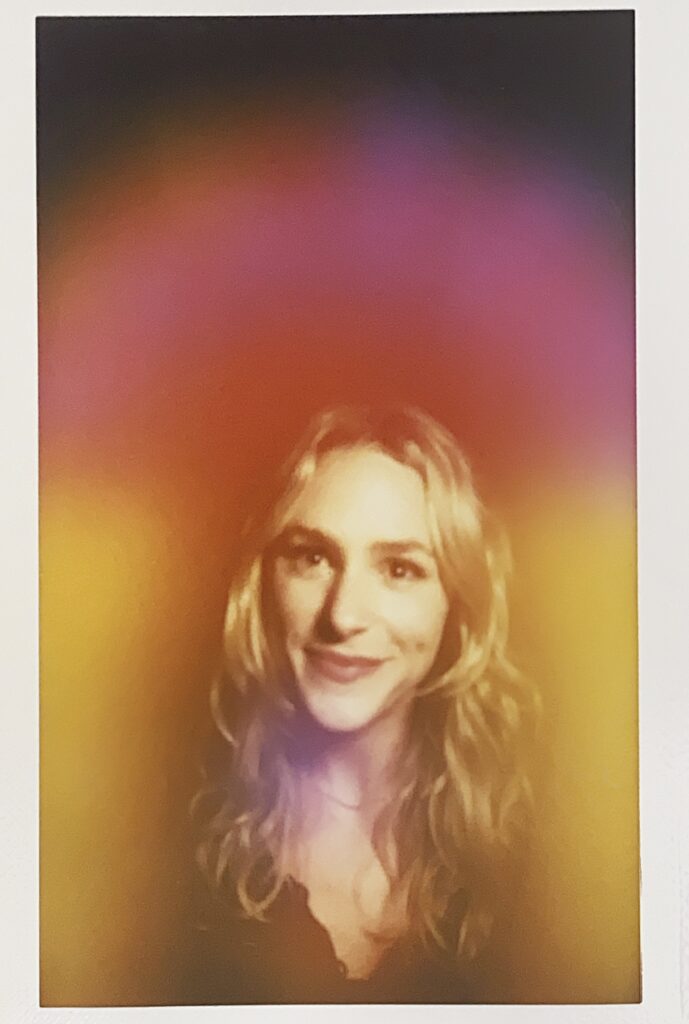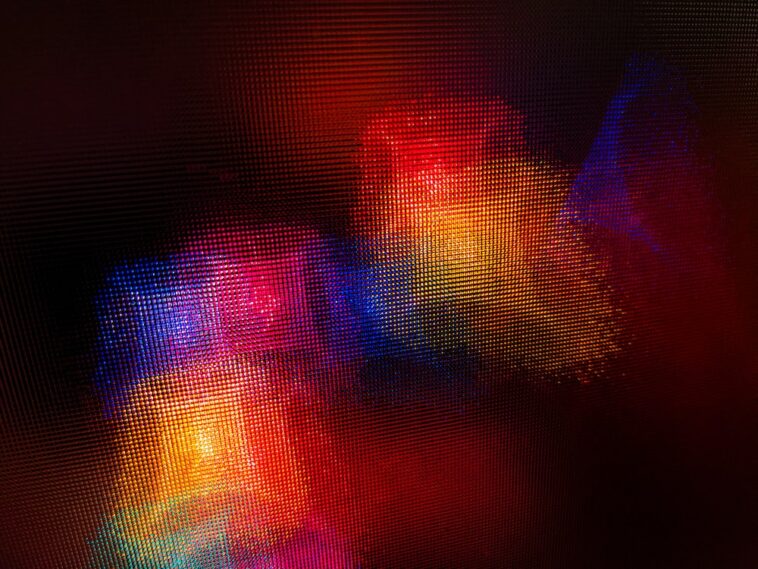The world can often be much easier to navigate when a person is in-tune with themselves. Post-pandemic, people have been shifting inward. Many of us are asking ourselves hard questions, trying to figure out what we love and what brings us comfort in order to live our lives more fully. In the wake of all of this, mindfulness has taken center stage.
While you may feel meditation, yoga, sound bath, and reiki’d out, there is another way to work with a reader to better understand where you are right now. Tuning into your aura – or the emotional, electromagnetic field that surrounds your body – can help you to basically “check your vibe” (vibrational frequency) and see what is happening emotionally for you.
And while aura practitioners can absolutely help to read your auric field and give you advice based on the colors and transitions they can recognize, having a physical representation of this phase in your life can be a helpful visual aid.

Enter: Aura Photography. Like this of one of the Gimme editors.
How does Aura Photography work?
Rooted in ideas based on science, aura photography was created in 1939 by Semyon and Valentina Kirlian. A concept based on X-rays, this type of photography was designed to capture electrical coronal discharges or emanations of color. The Kirlians believed the resulting photographs could glean insight into the emotional body of the portrait’s subject.
In 1970, the AuraCam 6000 was developed by Guy Coggins. This gave more access to this concept of Kirlian photography to the mainstream and is the standard in the industry today. Two metal plates are integrated into the camera, on which those being photographed place their hands. The camera is adjusted for long double exposure and snaps a photo of both the subject matter and the colorful electricity they are emanating. These photos often come out looking like the person photographed is surrounded by a rainbow, or cloud of colors.
What does each color mean?
There are myriad colors that can manifest in a Kirlian photograph. If you are already aware of auric and chakral colors, then you may have a little more insight into each one’s meaning. Here is a little cheat sheet:
- Red – passionate, grounded, strong-willed, quick-witted
- Orange – thoughtful, considerate, adventurous, like to learn from experience
- Yellow – creative, charismatic, magnetic, confident
- Green – easily influenced by outside sources, artsy, benefits from nature
- Blue – less grounded, insightful, curious, expressive
- Purple – intuitive, sensitive, may have psychic abilities
- Pink/magenta – caring, loving, kind, may need to set boundaries
While these are the primary colors that will manifest in a Kirlian photo, there are others – and specific shades of each – that may show up and tell you even more about yourself. Be sure to ask your photographer specifically about each, and get as robust a reading as possible.
Why You Should Do It, Now
1. Aura Photographs teach you about your past, present, and future self.
According to Kirlian photographers and readers, the left side of the photograph (or the subject’s right side) depicts the energy of the recent past. This is where you have been, and maybe what you are moving away from. It can also indicate how others see you and third-party perspectives.
The center of the photograph can show you where you are right now. The right side of the photograph indicates your future and the energy that is currently being created.
2. Kirlian Photography is absolutely beautiful.
Maybe you believe in the concept and validity of auras, and maybe you don’t. But you can’t fight the fact that each photograph taken by a Kirlian camera is stunning. A halo of colors that surrounds you? Something you maybe couldn’t detect with your own eyes, but its warmth surrounded you either way?
Even if you end up with an entirely red photograph where you can barely see yourself through the cloud of vibrancy that surrounds you, the photo is a work of art. Take it from me, the person who has taken two similarly ridiculous photographs.
3. Aura Photography can aid with self-improvement.
In that initial reading, where you could hardly see my face behind the red tint, I was told that I view the world through my emotions, instead of more through matters of fact and reasoning. That was, my reader told me, why you could barely make out my face in the photo. As an Aries, I couldn’t say I was surprised.
During my second reading – at an entirely different crystal shop – the cloudiness lingered slightly, but my face was much more visible. I had been working on balance in my life, and the reading seemed to indicate I was moving in the right direction.
As you approach aura photography as a healing or grounding modality, know that it can be both validating and eye-opening. Approach the experience with an open mind, and be willing to learn from your reader. Their insight may help you to connect with yourself on a level you weren’t prepared for.



